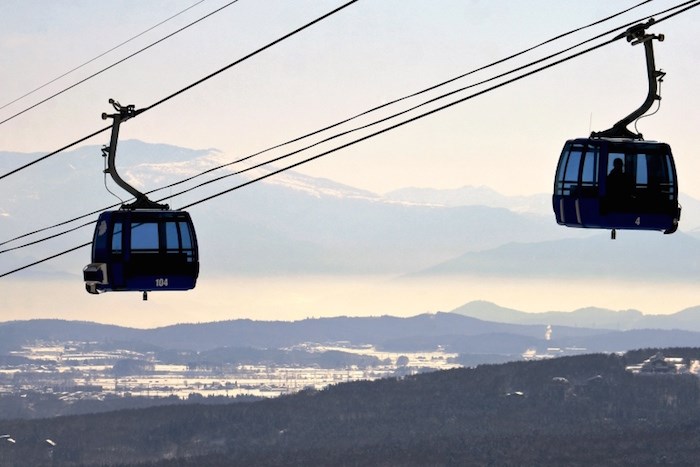A gondola up Burnaby Mountain is back on the front burner.
It was included as one of the “major projects” in the Mayors’ Council’s 10-year vision  for transit and transportation, released on Sept. 21.
The idea of a gondola first surfaced years ago. It was a $120-million plan that was eventually scrapped in favour of other transit projects around the region, like the Evergreen Line.
 A gondola project was included in the latest update of the Mayors’ Council 10-year vision. Photograph By FILE
A gondola project was included in the latest update of the Mayors’ Council 10-year vision. Photograph By FILE
Last summer, SFU president Andrew Petter spoke out in favour of the project. He said there were renewed calls given the growing population of students and staff on Burnaby Mountain, as well as the development of the residential community.
Petter noted students were becoming increasingly frustrated at getting passed by full buses every day due to long bus lineups at Production Way and on Burnaby Mountain. There are currently 25,000 daily bus trips to and from Burnaby Mountain, and demand is expected to grow by 60 per cent in the next 20 years, according to the Mayors’ Council’s 10-year plan.
He also argued there are “significant” environmental benefits to an aerial link over diesel buses.
According to a 2011 business case prepared for TransLink, it would cost $120 million to build the gondola, with annual operating costs of $3 to $3.5 million (in 2011 dollars). The study found the benefits outweigh the cost, including a reduction of 7,100 tonnes in greenhouse gas emissions.
“This business case indicates that the benefits of improved service exceed costs, making a gondola a cost-effective means of meeting existing and future travel demand and promoting transit usage. The project also meets transportation, financial, environmental, urban development, social and community, and deliverability objectives,” the document stated.
However, at the time, TransLink said the gondola wasn’t a priority.
TransLink spokesperson Chris Bryan told the NOW the project is “moving slowly,” and there’s still a lot more work to do before it becomes a reality.
“If the decision is made to continue investigation of this project, work would include public and stakeholder engagement, seeking funding partners, studies to look at the potential impacts, and more detailed technical work to achieve more cost certainty,” he wrote in an email.


